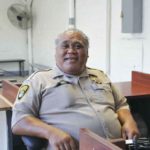“Beginnings” emerged as a dominant theme at the Prison University Project’s (PUP) graduation ceremony. The graduation began with music, cheers, and … [Read more...]
Archives for August 2016
Vice Mayor Looks to SQ to Improve Oakland
Oakland Vice Mayor Annie Campbell Washington came to San Quentin State Prison and talked about improving her community, including the city’s … [Read more...]
Student-run Newspaper Drops In on Inmate-run Newspaper
Several students and faculty from The Pioneer, California State University East Bay’s (CSUEB) student-run newspaper, visited San Quentin State Prison … [Read more...]
California Allocates $10.6 Billion for Prisons
The 2016-17 California budget includes $10.6 billion for operating the state’s prisons, which represents 8.5 percent of the state budget, compared to … [Read more...]
Correctional Officer Sakaria Tagaloa Retires After 30 Years
On June 25, after working more than 30 years for the California Department of Corrections and Rehabilitation (CDCR), Officer Sakaria Tagaloa retired. … [Read more...]
Criminal Justice Experts Call for More Reform
Some criminal justice experts say major reforms have been adopted in America’s criminal justice system, but others say changes have been modest, … [Read more...]
U.S. Houses One-Third of World’s Female Prison Population
Nearly one-third of the world’s women prisoners are in the United States, noted Hillary Clinton in an op-ed piece for CNN and on her website. The … [Read more...]
Scotland Considers Scrapping Short-Term Jail Sentences
Scotland is considering scrapping jail sentences of one year or less to reduce its prison population. The number of people in Scotland’s jails is … [Read more...]
Face-to-Face Visits Vital to Inmates’ Personal Relationships
One of the most important ways for prisoners to nurture personal relationships with their family and friends is to have face-to-face visits. In many … [Read more...]
Kingian Nonviolent Teachings Make Way to SQ
In a secluded room, tucked away in a corner of a prison yard, about two dozen inmates stood face-to-face, staring at each other, eye-to-eye. They … [Read more...]
- 1
- 2
- 3
- …
- 5
- Next Page »



